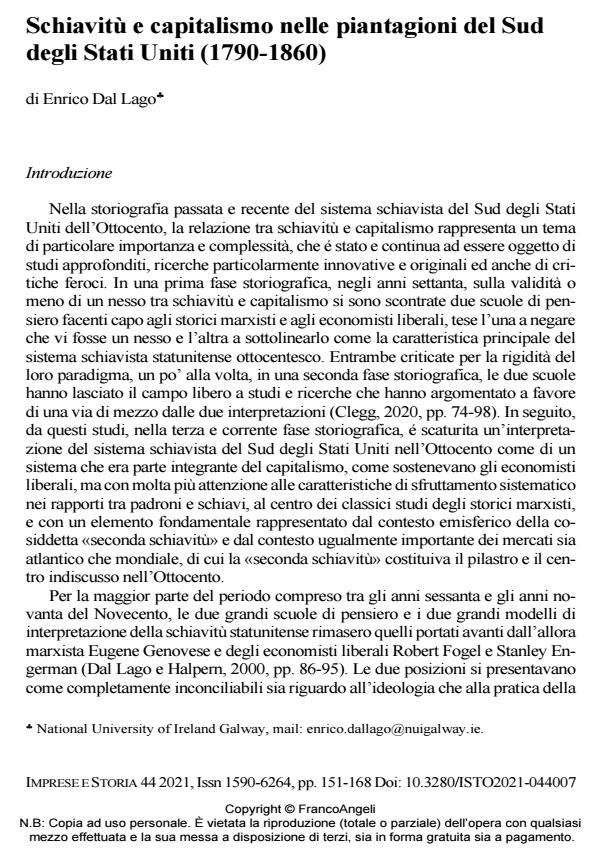Schiavitù e capitalismo nelle piantagioni del Sud degli Stati Uniti (1790-1860)
Titolo Rivista IMPRESE E STORIA
Autori/Curatori Enrico Dal Lago
Anno di pubblicazione 2022 Fascicolo 2021/44
Lingua Italiano Numero pagine 18 P. 151-168 Dimensione file 215 KB
DOI 10.3280/ISTO2021-044007
Il DOI è il codice a barre della proprietà intellettuale: per saperne di più
clicca qui
Qui sotto puoi vedere in anteprima la prima pagina di questo articolo.
Se questo articolo ti interessa, lo puoi acquistare (e scaricare in formato pdf) seguendo le facili indicazioni per acquistare il download credit. Acquista Download Credits per scaricare questo Articolo in formato PDF

FrancoAngeli è membro della Publishers International Linking Association, Inc (PILA)associazione indipendente e non profit per facilitare (attraverso i servizi tecnologici implementati da CrossRef.org) l’accesso degli studiosi ai contenuti digitali nelle pubblicazioni professionali e scientifiche
Enrico Dal Lago, Schiavitù e capitalismo nelle piantagioni del Sud degli Stati Uniti (1790-1860) in "IMPRESE E STORIA" 44/2021, pp 151-168, DOI: 10.3280/ISTO2021-044007